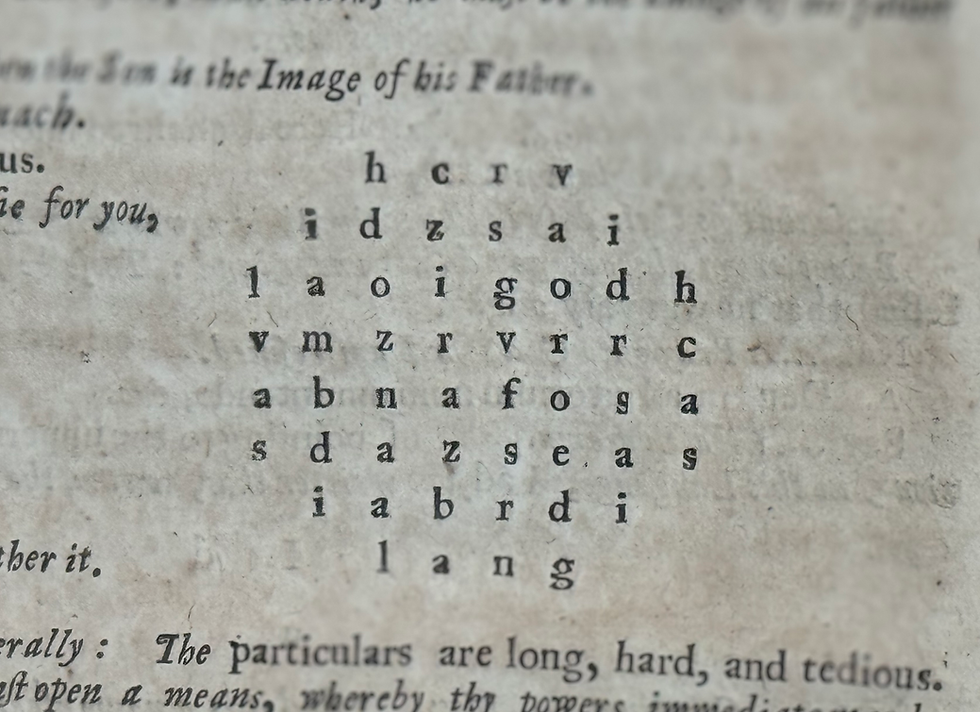The Four Peripheral Names on the Tablet of Nalvage
- Pat Zalewski

- Oct 6
- 1 min read
Updated: Oct 8
The post explores the symbolic and functional significance of the four Latin names surrounding the Tablet of Nalvage, as presented by John Dee.

The Four Orders of Angels
Ministrantes ("those who minister") represent angels as agents of service, facilitating divine will and guidance, as seen in Hebrews 1:14 and Psalm 103. They act as a bridge between heaven and earth, ensuring effective communication of divine intentions.
Confundentes ("those who confound") embody divine judgment, countering opposition and ensuring purity in the ministry. Their role is to dismantle resistance, as illustrated in Genesis 11 and various psalms, thus protecting the divine purpose.
Laudantes ("those who praise") emphasize the importance of worship in angelic action, reflecting the continuous praise found in scripture, such as Psalm 148 and Isaiah 6:3. They sanctify all actions, ensuring that ministry and judgment are framed within a liturgical context.
Confirmantes ("those who confirm") serve to establish and secure divine truths, ensuring that the outcomes of ministry and judgment are lasting and grounded in truth, as noted in Mark 16:20 and Romans 15:8.
Interconnectedness and Functionality
The arrangement of these four orders around the cross of the tablet illustrates their unity and cyclical nature, mirroring the biblical narrative of divine action: ministry leads to judgment, followed by worship, and culminates in confirmation. This dynamic process reflects a balance of mercy and judgment, with each order contributing to a holistic spiritual ecosystem.
The Tablet of Nalvage thus serves as a liturgical map, integrating biblical theology and angelic function, and providing a model for human spiritual practice that aligns with divine order.




Comments